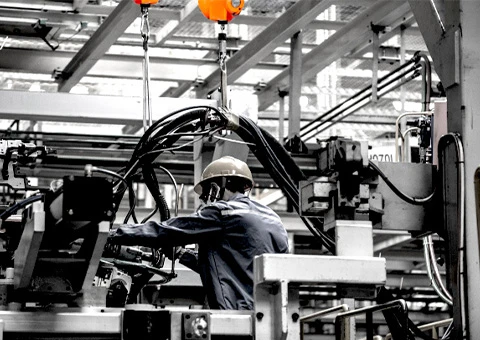rolling gantry
Understanding Rolling Gantries Enhancing Efficiency in Construction and Logistics
In the realm of construction and heavy industry, the efficiency of material handling and transport is paramount. One of the most innovative solutions that has emerged in recent years is the rolling gantry. This equipment has revolutionized the way heavy loads are moved, providing both flexibility and speed in various applications, ranging from construction sites to manufacturing facilities and logistics hubs.
What is a Rolling Gantry?
A rolling gantry is a type of crane system designed to move loads across a horizontal plane. Typically, it consists of two vertical supports (legs) connected by a horizontal beam, which carries a hoist or lifting mechanism. What sets rolling gantries apart from traditional fixed gantries is their mobility they are mounted on wheels or tracks, allowing them to roll along specified paths. This feature enables the crane to be repositioned easily, providing greater versatility in dynamic work environments.
Applications in Construction
In construction, rolling gantries play a critical role in managing heavy materials, such as steel beams, concrete components, and prefabricated elements. They can swiftly transport loads from delivery trucks to various points on site, significantly reducing the time spent on manual labor and promoting safety. As construction projects become increasingly complex, the need for adaptable solutions grows, and rolling gantries offer a perfect balance between mobility and lifting capacity.
Moreover, these gantries can be adjusted to different heights and spans, making them suitable for a wide range of tasks. Their ability to easily navigate around obstacles and fit into tight spaces can streamline workflows and enhance overall productivity on site. By employing rolling gantries, construction managers can optimize their operations, leading to more efficient project timelines and reduced costs.
Benefits in Logistics
rolling gantry

The logistics sector also benefits significantly from rolling gantries. In warehouses and distribution centers, these cranes facilitate the movement of pallets and bulk items, improving the efficiency of loading and unloading operations. The inherent mobility of rolling gantries allows them to service multiple areas within a facility, eliminating the need for multiple fixed lifting systems. This means fewer equipment expenses and enhanced operational flexibility when dealing with varying shipment sizes and types.
Additionally, rolling gantries can be deployed in tight aisles or congested warehouse layouts where traditional forklifts may struggle. Their compact design and maneuverability allow for effective space utilization, an essential factor in maximizing efficiency and throughput in modern logistics operations.
Safety and Ergonomics
Safety is a critical consideration in any industrial setting, and rolling gantries are designed with this in mind. They provide a stable lifting solution, reducing the risk of accidents associated with manual lifting or using less stable equipment. Furthermore, operators of rolling gantries benefit from enhanced ergonomics, as these systems minimize the need for heavy lifting and repetitive strain motions while performing tasks.
Integrating rolling gantries into a workplace can also improve overall site safety as they help to keep workers clear of hazardous maneuvers associated with heavier lifting. By automating much of the transport process, the risk of injury is significantly reduced.
Conclusion
As the construction and logistics industries continue to evolve, the demand for innovative and efficient material handling solutions will grow. Rolling gantries represent one of the most adaptable and effective choices available today. Their mobility, combined with lifting capacity and ergonomic design, makes them a vital asset in various applications. Whether in moving heavy loads on a bustling construction site or streamlining operations in a busy warehouse, rolling gantries enhance productivity, improve safety, and ultimately contribute to the success of projects across many sectors. As businesses strive to optimize their operations, rolling gantries will undoubtedly remain at the forefront of material handling technology.
-
Unlock Seamless Relocation with Our Heavy Equipment Moving ExpertiseNewsJun.06,2025
-
Unleash Unrivaled Flexibility with Our Adjustable Gantry CraneNewsJun.06,2025
-
Unleash Heavy-Duty Efficiency with Our Industrial Gantry Crane SolutionsNewsJun.06,2025
-
Revolutionize Steel Handling with Our Magnetic Lifter RangeNewsJun.06,2025
-
Master Equipment Mobility with Premium Machinery Mover SolutionsNewsJun.06,2025
-
Elevate Your Material Handling with Magnetic Lifter TechnologyNewsJun.06,2025
-
YS Permanent Lifting Magnets: The Smarter Way to Handle SteelNewsMay.22,2025
